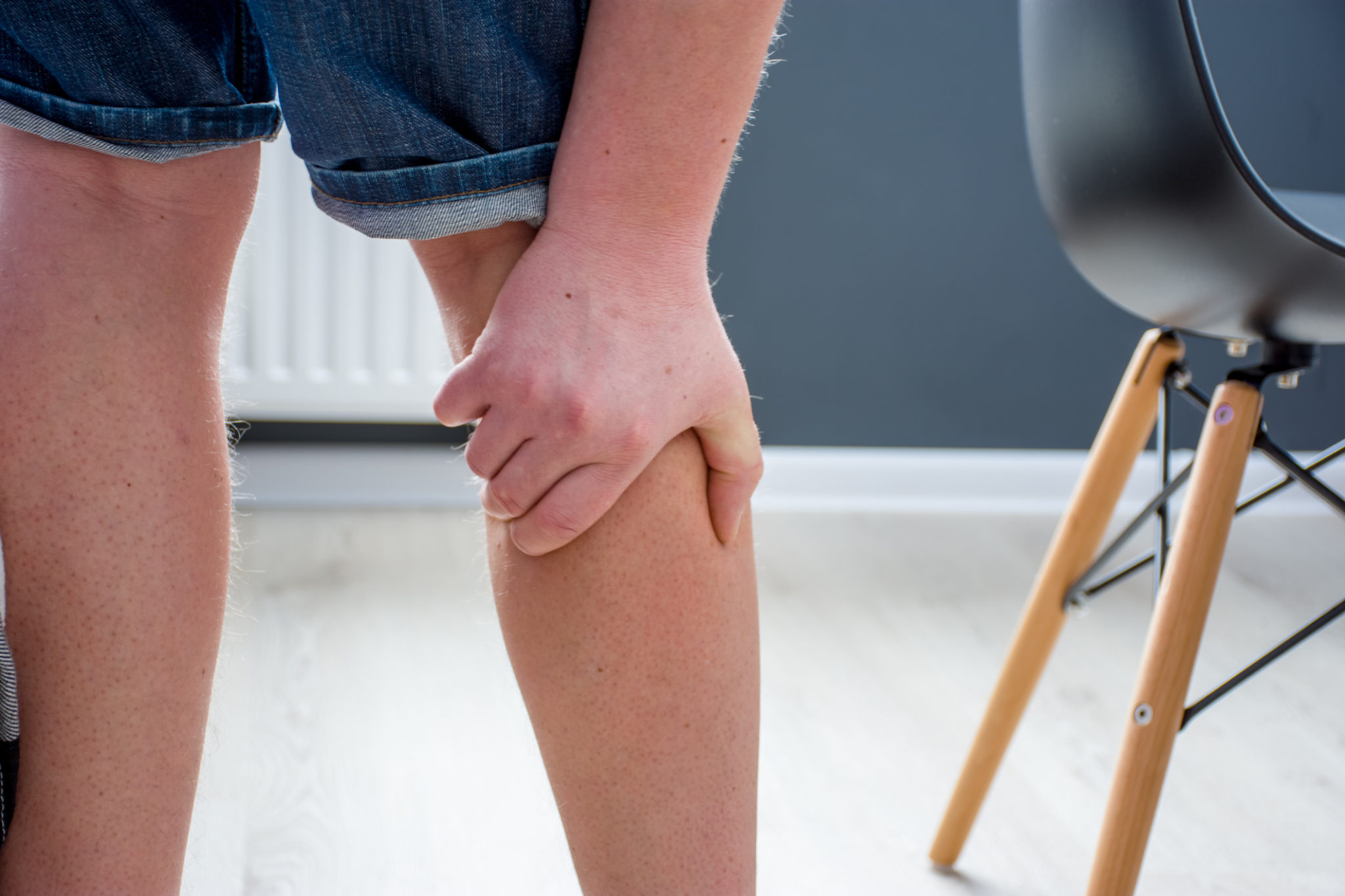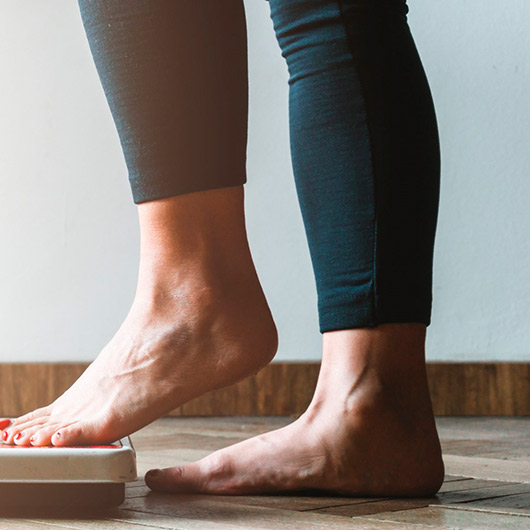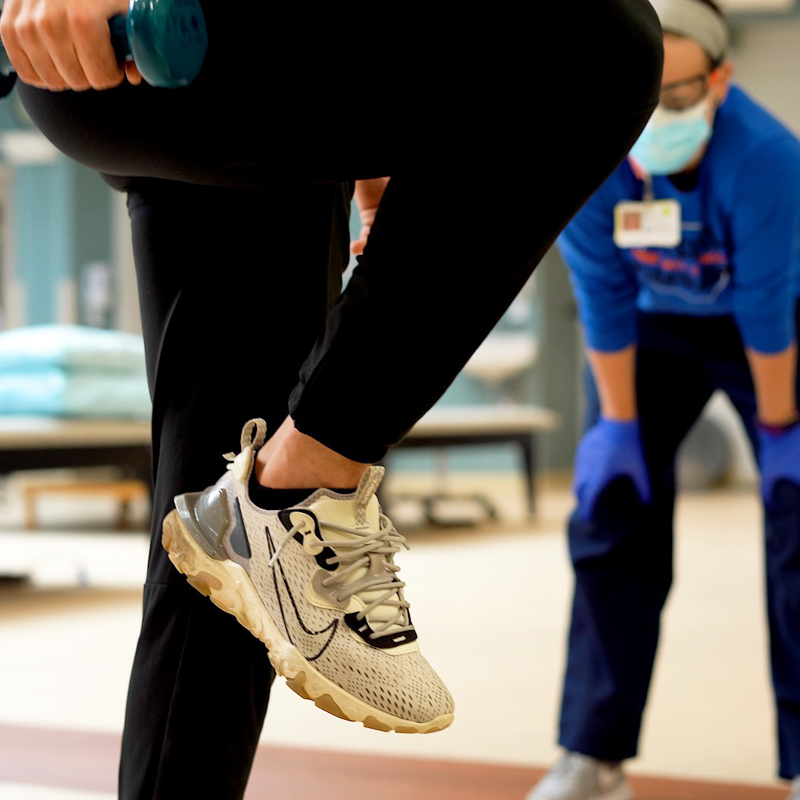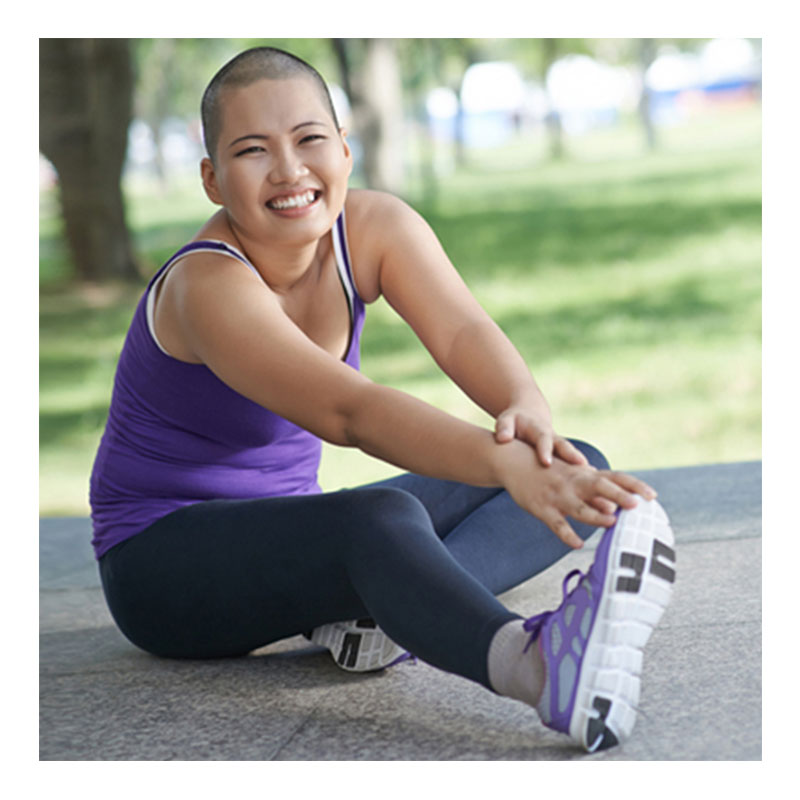What Do Blood Clots in the Leg Feel Like?

June 23, 2021
Have you ever sat on a long flight, then stood up to leave the plane and noticed that your leg hurt in a way that it hadn’t at the start of your journey? Prolonged sitting may increase the risk of developing a blood clot in the leg, which is also called deep vein thrombosis (DVT).
DVT typically forms deep within a vein in the leg. When a blood clot forms, it can obstruct blood flow, leading to uncomfortable symptoms. If a clot breaks free from the spot where it formed, it may cause a potentially life-threatening condition known as pulmonary embolism, when the clot travels through blood vessels and enters the lung.
Not all blood clots in the leg lead to pulmonary embolism; some resolve on their own. But if you notice signs that you may have DVT, seeing a doctor quickly may help you avoid dangerous complications.
“There are effective treatments for a blood clot in the leg, most notably blood thinners, which hinder clotting ability while they’re being used,” says Vikalp Jain, M.D., vascular surgeon at Jersey Shore University Medical Center. “Seeking medical help early when you think that you may have a blood clot is always the right decision, even if it turns out to be nothing. It’s better to be safe than sorry when pulmonary embolism could be a possibility.”
Signs that you may have a blood clot
Many people who have a blood clot notice discomfort in the affected leg and can’t attribute the problem to a recent injury, overuse or another factor. They’re more common after surgery and among people on bed rest or those who sit for long periods without stretching.
Symptoms include:
- leg pain or discomfort that may feel like a pulled muscle, tightness, cramping or soreness
- swelling in the affected leg
- redness or discoloration of the sore spot
- the affected area feeling warm to the touch
- a throbbing sensation in the affected leg
Some people don’t experience noticeable symptoms, which makes it difficult for them to recognize that they should seek care.
Blood clots are more common among people who:
- smoke
- are obese
- take birth control pills or hormone replacement therapy
- have a personal or family history of blood clots
Can kids get blood clots in the leg?
"Blood clots are more common among people age 60 and older, but it’s possible for kids to experience DVT. They’re rare in healthy children, but they’re more common among kids who are hospitalized," says Katherine Armstrong, M.D., MS, pediatric hematologist-oncologist of Joseph M. Sanzari Children’s Hospital at Hackensack University Medical Center.
Factors that may increase the risk of blood clots in children include:
- having had surgery
- having a catheter or PICC line placed in a vein
- being confined to bed
- having a family history of blood clots
- taking birth control pills (teenage girls)
When to seek care for a possible blood clot
If you think that you or your child may have a blood clot in the leg, seeing a doctor that day may help you avoid complications. If you can’t get a same-day appointment with your regular doctor, visit an urgent care center or emergency room. Quick care may help you ward off a pulmonary embolism, which may be deadly.
Whether or not you’ve noticed symptoms of DVT, seek emergency care if you have symptoms of a pulmonary embolism, including:
- sudden difficulty breathing or shortness of breath
- chest pain that worsens when you try breathing deeply
- a sudden cough, especially if you produce bloody mucus
- a fast heartbeat
- dizziness or losing consciousness
Healthy habits may lower your risk of blood clots
If you have a family history of blood clots or you’re about to have surgery, talk to your doctor about ways to lower your risk of DVT.
To lower your risk of blood clots in everyday situations, make lifestyle changes, including:
- breaking up long periods of sitting (whether at home, at work or while traveling)
- being more physically active
- maintaining a healthy weight
- quitting smoking
Next Steps & Resources:
- Meet our sources: Vikalp Jain, M.D., Katherine Armstrong, M.D., MS
- To make an appointment, call 800-822-8905 or visit our website.
- Find an urgent care center near you.
The material provided through HealthU is intended to be used as general information only and should not replace the advice of your physician. Always consult your physician for individual care.
Worst Foods to Eat for Your Health

If you haven’t thought about whether or not the foods that you consume are truly nourishing you, take time to examine your eating habits to ensure that you’re meeting your nutritional goals.
How Losing Weight Can Increase Your Life Expectancy

There are quite a few consequences of obesity, including conditions such as high blood pressure, diabetes, high cholesterol and heart disease.

Should You Drink Apple Cider Vinegar Before Bed?
You may have heard that having a shot of apple cider vinegar before bed can help you lose weight. Our experts reveal if there's any truth to this health trend.

Five Tips for a Healthier Workout
Three of our cardiologists share how to fit heart healthy exercise into even the busiest schedules.

Could a Keto Diet Be Bad For Your Heart?
It may only be four letters, but it is also one of the most popular diet programs ever: Keto.

Top 3 Weight-Loss Surgery Myths
Aram E. Jawed, M.D., bariatric surgeon at JFK University Medical Center clarifies misconceptions about weight-loss surgery.